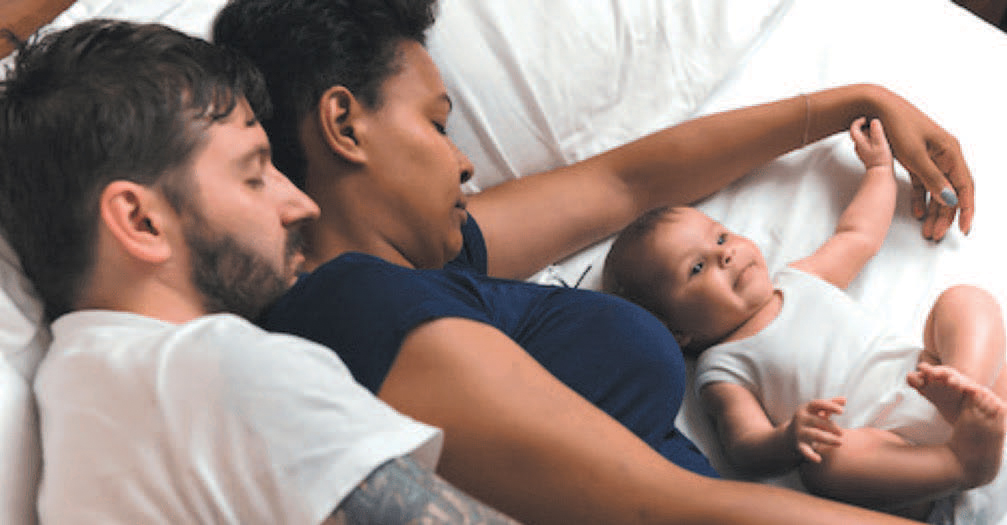Submitted by the Guilford County Dept. of Public Health

The practice of co-sleeping or bed-sharing with one’s baby may seem helpful to deal with the late-night feedings but it can be dangerous. It is recommended that after feeding a baby, parents should place the baby back in a crib, bassinet or play yard.[/caption]
Is there anything more tragic than a parent losing their infant child? Thousands of infants in the United States die suddenly and unexpectedly every year while sleeping, often due to Sudden Infant Death Syndrome (SIDS) or accidental death from suffocation or strangulation. Bed-sharing or co-sleeping can be one cause of this heart-breaking situation but may be prevented by providing infants with a safer sleeping environment.
In an effort to combat the growing problem of sleep-related infant deaths, Guilford County Public Health and The American Academy of Pediatrics (AAP) recommends:
- Place babies on their backs for all sleep times (meaning for naps and at night) until their first birthday. Babies who sleep on their backs are less likely to die of SIDS than babies who sleep on their stomachs or sides. Although some parents worry that babies will choke when lying on their backs, the baby’s airway anatomy and gag reflex will prevent this from happening. If the baby falls asleep in a car seat, stroller, swing or infant carrier move them to a firm sleep surface on their back as quickly as possible.
- Use a firm sleep surface. A crib, bassinet, portable crib or play yard that meets the Consumer Product Safety Commission’s safety standards should be used for the infant’s sleeping area. Nothing else should be in the baby’s crib or sleep area (no blankets, crib bumper pads, stuffed animals, other children or pets). A firm mattress along with a tight-fitted sheet designed for the product being used are the only things that should be in the crib with the baby.
- Keep the baby’s sleep area in the same room as yours for the first six months to a year if possible. Place the baby’s crib, bassinet, portable crib or play yard close to your bed. This can make feeding, comforting and watching your baby easier at night.
- Keep soft objects, loose bedding or any other objects that could increase the risk of entrapment (confining the baby so they cannot breathe), suffocation or strangulation out of the baby’s sleep area. This would include: pillows, blankets, quilts, comforters, toys, bumper pads or anything that attaches to the crib slats or sides. If you are worried about the baby getting cold, you can use infant sleep clothing such as a wearable blanket. Be careful not to overheat the baby. In general, the baby should only wear one more layer than you are wearing.
Although some parents think that co-sleeping or bed-sharing is helpful to deal with the late- night feedings, this practice can be dangerous for your baby. Breastfeeding is recommended for your baby, but always place your baby back in the crib, bassinet or play yard to sleep after the feeding.
Paying close attention to providing safer sleep environments and practices can help prevent accidental infant deaths. For more information about co-sleeping or bed-sharing, visit the American Academy of Pediatrics Website: www.healthychildren.org/safesleep or speak with your baby’s health care provider.
